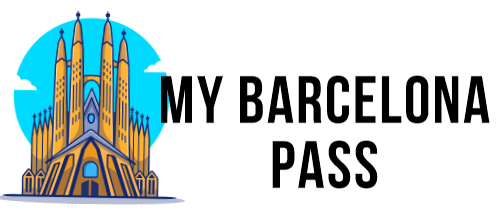About Casa Mila
Casa Mila Architecture
Casa Milà is a prominent example of the Modernisme style of architecture, which emerged in Catalonia in the late 19th and early 20th centuries. This architectural style was a cultural shift that saw a collaboration between artists, architects, and sculptors, who worked together to create buildings that reflected the Catalan identity. Casa Milà was the last private residence designed by Antoni Gaudí and was commissioned by Pere Milà and his wife Roser Segimón in 1906.
The building is characterized by its undulating stone facade, which appears to be carved out of solid rock. The interior and exterior sections of Casa Milà were designed using geometry, and many Catholic symbols were incorporated into the building's design, reflecting the architect's deep religious convictions. The building is a combination of two structures with nine floors, including a basement that was originally intended to be used as a garage.
The roof of Casa Milà is a masterpiece of design and features unique staircases, chimneys, and skylights, which are a testament to Gaudí's innovative and bold ideas. Today, Casa Milà is a popular tourist attraction, drawing over a million visitors each year who come to admire its stunning architecture and cultural significance.
Also Read: Casa Mila Facts
Who was Park Guell Designer?
Antoni Gaudí, a renowned Spanish architect, was known for his unconventional and avant-garde designs during his time. Despite criticism from his contemporaries, Gaudí was commissioned by Spanish noblemen to design some of the most well-known landmarks in Barcelona, including Park Guell, Casa Batllo, Casa Vicens, Palacio Guell, and Casa Milà. He also played a significant role in the design of the Nativity Facade and the Crypt of La Sagrada Familia.
Despite being under-appreciated during his lifetime, Gaudí's innovative ideas and unique designs gained fame posthumously, making him an inspiration to architects and designers around the world. His work is characterized by a mix of Gothic and Art Nouveau styles, incorporating natural shapes, textures, and materials in his designs. Today, Antoni Gaudí's creations are regarded as some of the most impressive and influential works of architecture, reflecting the cultural and artistic identity of Spain.
Casa Mila Interior & Exterior
- Entrance Halls: Decorated with wall paintings, tapestries, and artist-designed columns depicting mythology.
- The Apartment: Couple's residence with antique furniture, decorated ceilings, and siMilàrly designed rooms for renting out.
- The Roof: Extraordinary area with marble sculptures, skylights, chimneys, and a bohemian feel using glass, pottery, and marble.
- Espai Gaudí: A museum honoring Antoni Gaudí's life and works, located in the converted attic with rib-like arches and original collections of pictures, building plans, videos, and models.
Suggested Read: Inside Casa Mila
- Facade: Self-supporting structure cut out of stone, connected to floors via iron beams, with a curtain wall-like design preserving large windows. Built with limestone and stones.
- Entrance: Natural elements used, glass and iron grille doors shaped like tree branches for vehicle and human entry.
- Patios: Two large patios provide ventilation and natural lighting to all 16 apartments, a unique feature at the time as most buildings only had one patio.
FAQ’s for Park Guell Architecture
When was Park Guell built?
Construction of Park Guell began in 1900 and was completed in 1914.
What is the architectural style of Park Guell?
Park Guell is a prime example of Catalan Modernism, a style of architecture that emerged in Catalonia, Spain, in the late 19th and early 20th centuries.
What is the significance of Park Guell?
Park Guell is considered one of Gaudi's masterpieces, and it's listed as a UNESCO World Heritage Site. The park's unique architectural elements, vibrant colors, and stunning views make it a must-see destination in Barcelona.
How did Antoni Gaudi come up with the design for Park Guell?
Gaudi was heavily influenced by nature, and the park's unique features reflect this. He was also inspired by the works of other artists and architects of the time, such as Gothic and Mudéjar architecture.
Can visitors enter Park Guell for free?
While some areas of the park are free to enter, there is a fee to access the main monumental zone of the park.
How long does it take to explore Park Guell?
A visit to Park Guell can take anywhere from one to three hours, depending on how much time you want to spend exploring the park's various features.
Also Check: Royal Palace Of Madrid Gardens

